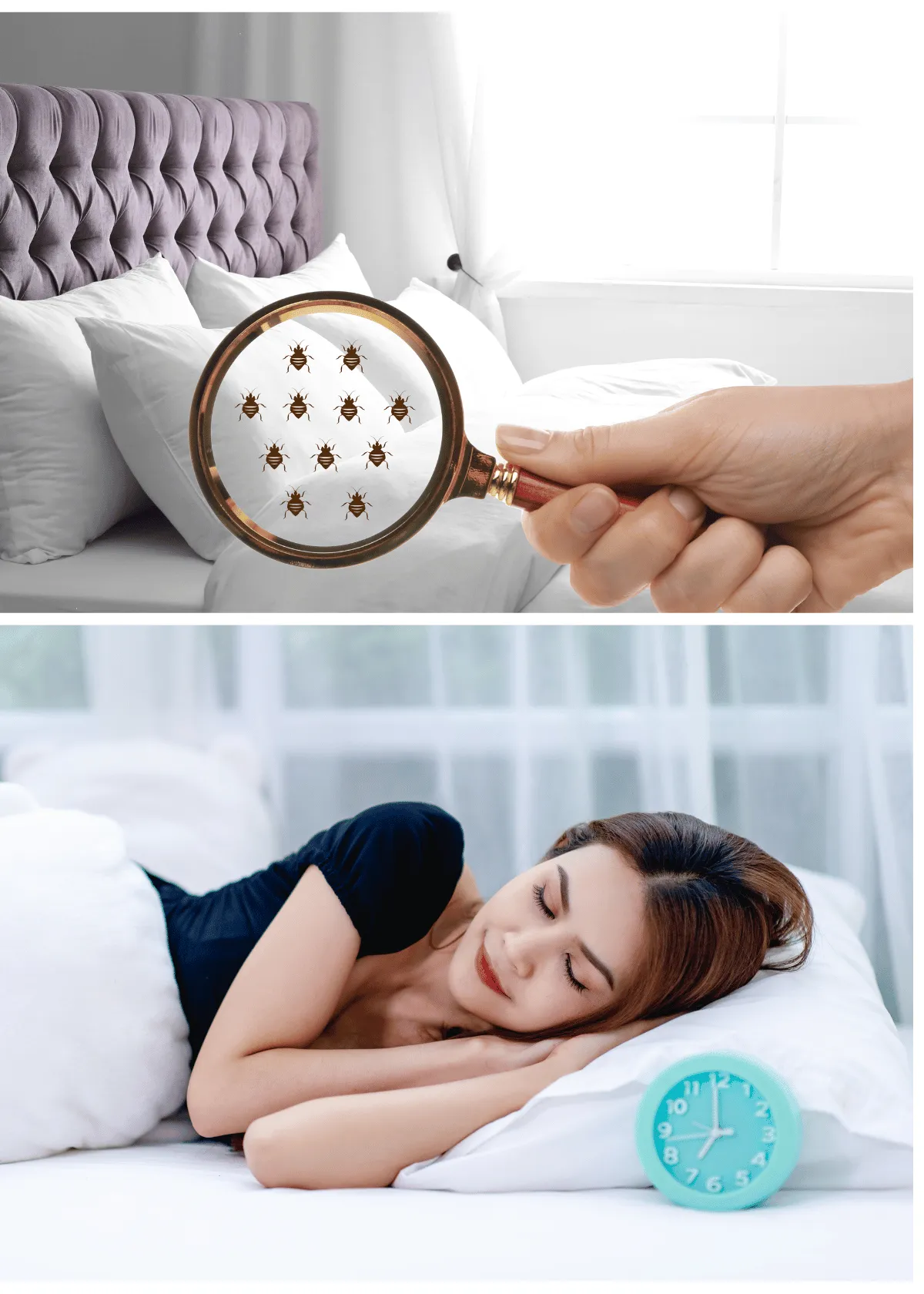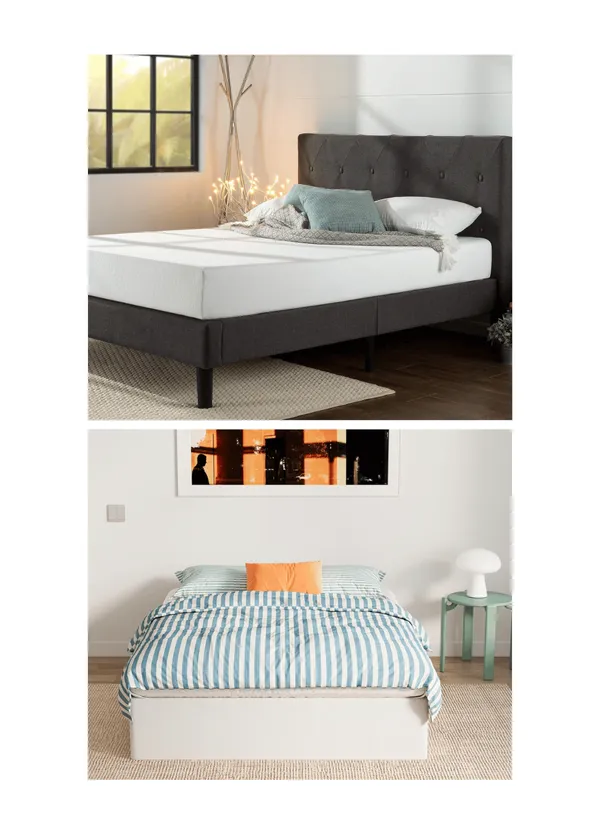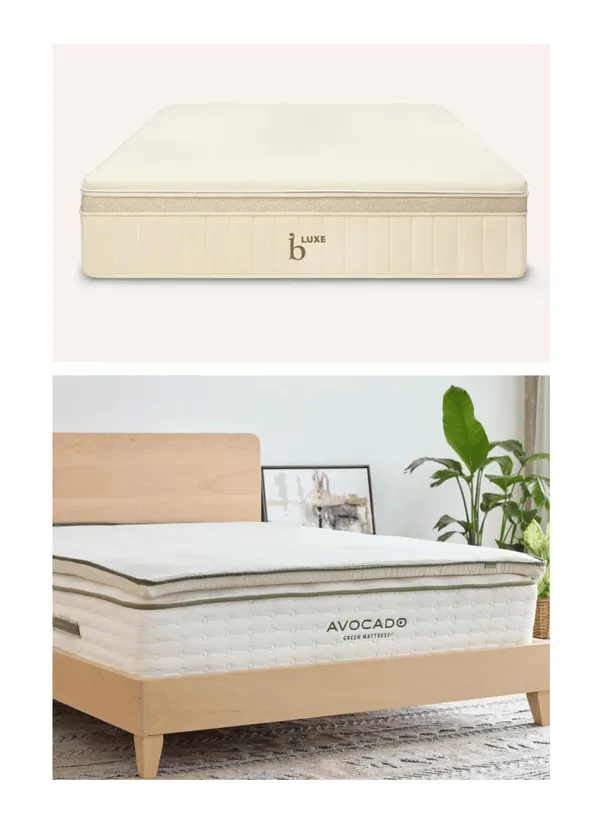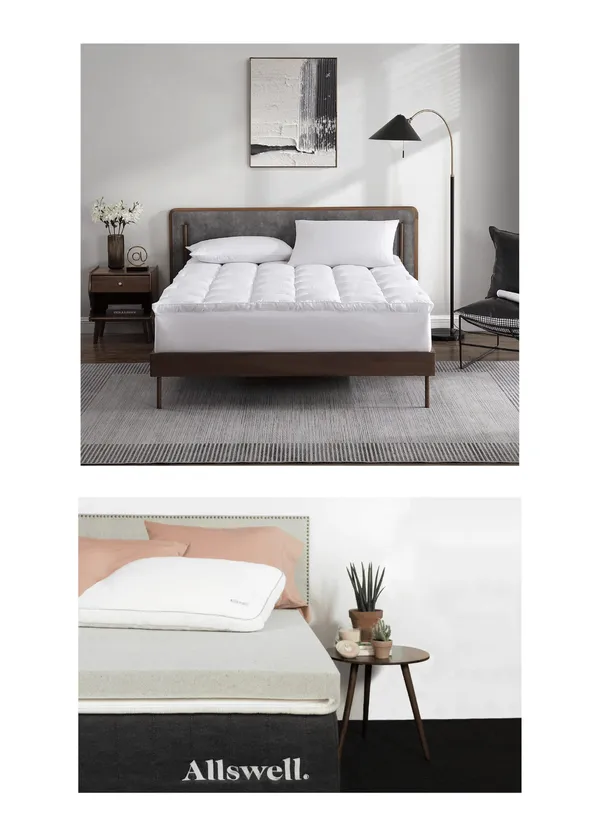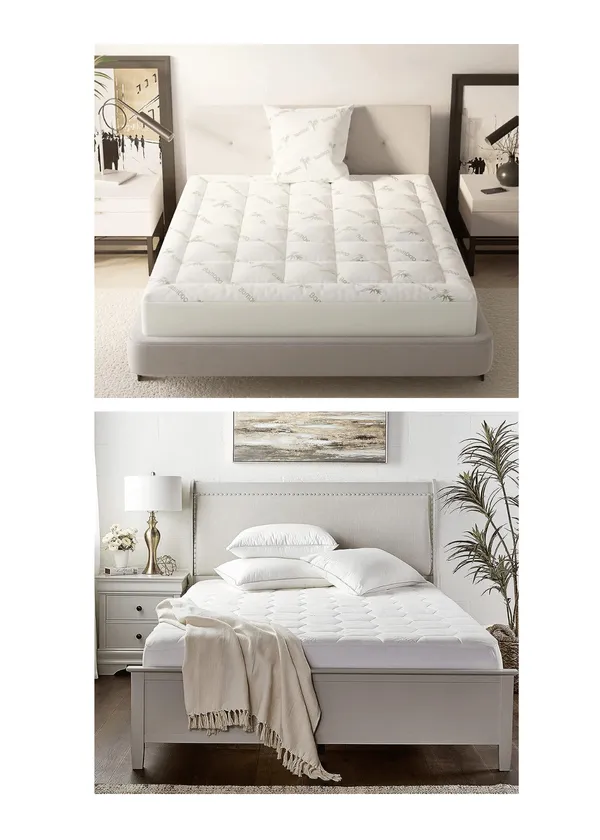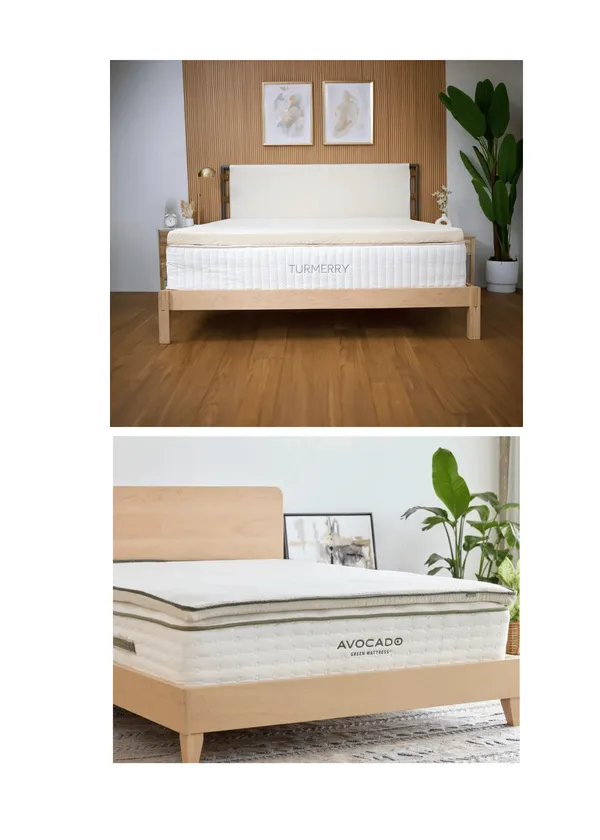(Last Update: 06/12/2024)
Have you ever woken up feeling more tired than when you went to bed or with sneezing and itchiness you can't explain?
In this blog post, I’ll help you uncover the hidden culprit: your current mattress. Mattresses can harbor allergens and irritants that compromise your sleep and overall health.
Imagine a world where every night is a refreshing escape, free from allergies and irritations, leading to rejuvenated mornings.
Dive deep with me as I unpack the hidden world of mattress health concerns and arm you with the best tips to safeguard your well-being.
Welcome to a journey towards a good night's sleep and better health!
Understanding Mattress Allergens
Allergens are substances that cause allergic reactions in susceptible individuals. In the context of mattresses, allergens can be naturally occurring or introduced through manufacturing and usage.
What are mattress allergens?
A certified sleep science coach would emphasize choosing the right mattress to avoid allergies and irritations.
While most modern mattresses, including innerspring mattresses and memory foam mattresses, offer improved design for comfort, some individuals might still find foam mattresses to be a source of allergens or chemical irritants. Bad innerspring mattresses can harbor bed bugs, a common allergen source.
Latex mattresses, often touted for natural materials, can be healthier for those prone to allergies. Regardless of type, an unsupportive mattress can disrupt restorative sleep.
It's crucial to ensure you're getting enough sleep and that your sleep environment promotes true rest and well-being. Modern beds have come a long way, but always prioritize personal health needs when selecting one.
Understanding mattress allergens involves recognizing contributors like synthetic latex and upholstered furniture. Household dust can harbor microscopic creatures, leading to allergen buildup and attracting unwanted critters.

Clear your mattress from these Allergens.
(Credit: Canva)
Common sources of allergens in mattresses:
DUST MITES: These minuscule creatures thrive in the warmth and humidity of our beds, predominantly feeding on the dead cells we shed. Their fecal matter and carcass fragments are potent allergens.
MOLD AND MILDEW: In mattresses with insufficient ventilation or those exposed to dampness, mold, and mildew or a tightly woven fabric can burgeon, releasing allergenic spores into the environment.
PET DANDER: For individuals who let their pets share their bed, the tiny skin flakes or 'dander' from these animals can be embedded in your high-quality mattress.
BODILY FLUIDS: Bodily fluids pose a higher risk for mattress health issues. Sweat, urine, and other fluids can penetrate the mattress, leading to mold, bacteria, and allergens. This can cause runny noses, reduced libido, and long-term health problems despite your best efforts. Regular cleaning with hot water and using mattress protectors can help mitigate these risks and promote a healthier sleep environment.
A bad mattress or mattress toppers may accumulate allergens, leading to poor sleep. Please ensure your new mattress and bed frame are free from such irritants so you can fall asleep safely.
Dust Mites: Tiny Troublemakers That Provoke Poor Sleep Quality
When it comes to microscopic menaces in our sleeping environment, dust mites take the lead. Though they're invisible to the naked eye, their impact on physical and mental health can be significant.
The biology of dust mites:
Dust mites are tiny arachnids, cousins to spiders and ticks. Measuring about 0.2-0.3 millimeters, they predominantly infest older mattresses, often lurking in the neglected guest room bed.
Though they have a short lifespan—up to three months and reproduce rapidly, they can cause poor sleep quality. A female dust mite can lay up to 100 eggs in her lifetime. Their primary diet consists of organic detritus, particularly the dead skin cells from skin humans shed daily.
Why they are a concern in a mattress:
Prolonged exposure to dust mites and allergens in old mattresses can weaken the immune system, making it more susceptible to allergies and respiratory problems.
They provide dust mites with food (our shed skin) and an ideal environment. The warmth and moisture we produce while sleeping offer them perfect breeding conditions.
Feeding, growing, and reproducing, they leave fecal pellets and body fragments behind.
Relying on a poor-quality mattress can intensify aches and pains, leading to sleep deprivation. Over time, this lack of rest can elevate high blood pressure. Investing in a quality mattress combats these issues effectively.
Chemicals and Irritations
A mattress, especially in modern manufacturing, often contains chemicals to enhance certain features or comply with safety regulations.
The role of chemicals in a mattress:
Chemicals are commonly used for various purposes. Flame retardants are added to meet fire safety standards, while synthetic materials like memory foam can contain polyurethane and other agents.
Adhesives, dyes, and anti-microbial treatments might also introduce chemicals into the new mattress composition.
Polyurethane foam can also cause excessive heat retention. High levels in mattresses lead to negative health effects and potential irritations for some individuals.
Potential health concerns:
Over time, a mattress can release, or "off-gas," volatile organic compounds (VOCs) into the air.
While many VOCs have minimal impact, some can lead to skin, eye, and respiratory irritations. Prolonged exposure may exacerbate allergies or asthma.
Some chemicals, like certain flame retardants, have been linked to more severe health issues, including endocrine disruption and neurodevelopmental problems in children.
Researching and opting for beds with low chemical profiles or those certified for low emissions is vital.
Obvious Signs and Symptoms of Mattress Allergies
An uncomfortable mattress, especially an older mattress, can lead to health problems, including dust mite allergies.
RECOGNIZING COMMON SYMPTOMS:
Allergic reactions to bad mattress allergens can manifest in various ways. Common symptoms include:
- RESPIRATORY ISSUES: Sneezing, coughing, wheezing, and a runny or stuffy nose can result from inhaling allergens like dust, mite feces, or mold spores.
- SKIN REACTIONS: Red, itchy rashes or eczema flare-ups might indicate an allergic reaction. Contact with certain chemicals or allergens in the mattress can cause these.
- EYE IRRITATION AND SLEEP DISRUPTION: Red, watery, or itchy eyes can directly result from bad mattress allergens.
WHEN TO SEEK MEDICAL ATTENTION:
If symptoms persist or worsen despite cleaning or changing your bedding, it's advisable to consult with a healthcare professional. Severe reactions, like difficulty breathing or swollen face or throat, necessitate immediate medical attention.
As the mattress ages, it might disrupt sleep habits, preventing adequate sleep. Investing in a high-quality bed is essential to combat these symptoms and ensure restful nights.
Being vigilant and proactive can help ensure our sleep environments remain sanctuaries for restful sleep, not allergic reactions.

New technology for removing mattress dust mites
(Credit: Canva)
Natural vs. Synthetic Mattresses
Choosing between a natural and synthetic mattress plays a pivotal role in the sleeping experience, particularly concerning allergies and irritations.
Natural Mattresses:
PROS:
- ECO-FRIENDLY: Often made from materials like organic cotton, wool, or latex, natural beds have a smaller environmental footprint.
- FEWER CHEMICALS: Typically, they contain fewer chemicals, reducing the risk of off-gassing and related irritations.
- HYPOALLERGENIC PROPERTIES: Materials like wool naturally repel dust mites.
CONS:
- PRICE: A natural mattress tends to be more expensive due to the cost of organic materials.
- DURABILITY: Some natural materials might not last as long as their synthetic counterparts.
Synthetic Mattress:
PROS:
- COST-EFFECTIVE: Generally more affordable, offering a range of price points.
- DURABILITY: Often have a longer lifespan, with materials like memory foam retaining their shape for years.
CONS:
- CHEMICALS can contain various chemicals, leading to potential off-gassing of VOCs.
- HEAT RETENTION: Some synthetic materials trap heat, making some sleepers uncomfortable.
How they affect allergies and irritations:
A natural mattress often offers a hypoallergenic sleeping environment, reducing the risk of allergic reactions.
At the same time, durable and cost-effective synthetic beds may introduce chemicals that can irritate sensitive individuals. However, advancements in synthetic mattress technology are addressing these concerns.
Best Practices for Mattress Hygiene
Maintaining impeccable mattress hygiene ensures a healthy sleep environment, free from allergens and irritants. Here are some best practices to follow for quality mattress make:
Regular Cleaning Routines:
- VACUUMING: At least once a month, vacuum the mattress using the upholstery attachment. This helps remove dust, dead cells, and dust mites.
- SPOT CLEANING: Whether it is your own mattress or crib mattresses, for accidental spills or stains, use a mild detergent and warm water to clean the area. Avoid saturating the new mattress, and always ensure it's completely dry before putting on bed linens to prevent mold and mildew growth.
- TURN AND ROTATE: Every 3-6 months, rotate the mattress 180 degrees and flip it if it's double-sided. This ensures even wear and prolongs the mattress's life.
- Air Out: Periodically, strip the bed and let the mattress breathe. Please place it in direct sunlight; UV rays can help kill bacteria.
In their article, “Healthy Sleep Starts Before You Hit the Sheets,” the National Sleep Foundation emphasizes the importance of our sleep environment: You should “Improve how you sleep with small changes to your evening routine.” A supportive mattress for proper spinal alignment.
Over time, even a comfortable mattress may lose its ability to provide adequate support. The life expectancy or mattress lifespan can be influenced by body weight and pressure points.
Old mattresses with good support can lead to positive health effects. Recognizing when to replace them is crucial to avoid discomfort and health issues.
The Importance of a Mattress Protector
A mattress protector is crucial to any bed setup as a shield between your mattress and the potential contaminants in the sleeping environment.
BENEFITS OF USING PROTECTORS
- ALLERGEN BARRIERS: Protectors prevent pet skin particles and other allergens from infiltrating the mattress, ensuring a cleaner sleep surface.
- SPILL AND STAIN PREVENTION: Accidental spills or sweat can lead to mold growth or staining. Protectors repel liquids, safeguarding the mattress's integrity and longevity.
- EXTENDED MATTRESS LIFE: Protectors can extend the mattress’s lifespan by keeping it clean and free from contaminants, ensuring a better return on your investment.
- EASE OF CLEANING: Washing a removable protector is simpler than cleaning a mattress. Regular washing ensures a hygienic sleep environment.
Incorporating a mattress protector enhances not just your mattress's life but also your sleep quality.
Airflow and Ventilation
A well-ventilated bedroom is paramount for the comfort and health of bedding materials.
THE ROLE OF A WELL-VENTILATED BEDROOM:
Adequate airflow reduces humidity, minimizing the risk of mold and mildew forming in the bedroom, especially on a new mattress or a pillow.
Furthermore, good ventilation helps dilute indoor pollutants, ensuring the air you breathe while sleeping is fresher and cleaner, promoting better sleep hygiene.
TIPS TO IMPROVE AIRFLOW:
- REGULARLY OPEN WINDOWS: A few minutes daily can introduce fresh air and help circulate indoor air.
- CEILING OR STANDALONE FANS can improve air circulation, ensuring uniform temperature and reduced moisture.
- POSITION FURNITURE THOUGHTFULLY: Ensure large furniture pieces aren't obstructing vents or air paths.
- AIR PURIFIERS can help remove airborne contaminants, improving overall air quality.
Incorporating good ventilation practices into your bedroom creates a conducive environment for quality sleep and fosters a healthier living space.
Replacing an Old Mattress
Over time, a mattress inevitably wears out, accumulating wear, tear, and potential allergens. Recognizing the signs of replacement is crucial for maintaining optimal sleep health.
WHEN AND WHY TO CONSIDER REPLACING
- LIFESPAN: Most mattresses have a lifespan of 7-10 years. After this period, materials break down, compromising comfort and support.
- VISIBLE WEAR: Indications like sagging, lumps, or protruding springs signal it's time to change.
- ALLERGIES: The mattress might be overburdened with allergens if you're experiencing increased allergy symptoms despite regular cleaning.
- DISCOMFORT: Waking up with aches and pains frequently can indicate that the mattress isn't providing the needed support.
CHOOSING A HIGH-ALLERGENIC REPLACEMENT
- MATERIAL MATTER: Natural materials like organic cotton, natural latex, and wool inherently repel allergens.
- CERTIFICATIONS: Look for certifications like CertiPUR-US or Greenguard Gold, indicating low chemical emissions.
- REVIEWS: Always check customer reviews. Often, those with allergies share their experiences, providing valuable insights.
Investing in a new mattress - particularly hypoallergenic can drastically enhance sleep quality, reduce allergies, and promote overall well-being.
Recommendations for Allergy Sufferers
PRODUCTS TO CONSIDER
- HYPOALLERGENIC MATTRESS PROTECTORS: They create a barrier between the mattress and potential allergens, ensuring a cleaner sleep environment.
- PILLOW PROTECTOR: Like mattress protectors, these safeguard pillows from accumulating allergens.
- AIR PURIFIERS: Those with HEPA filters can effectively remove airborne allergens such as pollen, pet skin particles, and dust.
The sleep advisor suggests a high-quality bed with a solid support core to prevent skin rashes. Proper maintenance of box springs is vital. Replacing an old box spring can also enhance mattress hygiene and longevity.
LIFESTYLE TIPS FOR MINIMIZING ALLERGIES FOR A RESTFUL SLEEP
Regular cleaning, frequently washing bedding, limiting outdoor exposure, and regularly grooming pets can significantly reduce allergens and improve indoor air quality and health.
Your current mattress could be over 10 years old, outlasting other beds. Consider transitioning to a new one. Investing in a high-quality foam mattress ensures comfort and durability for the years ahead.
Conclusion
Your mattress is where you rest your head and seek solace after long days. Its impact on your health, especially if you're prone to allergies and irritations, cannot be underestimated.
I have discovered many potential health issues related to mattresses, from lurking allergens to chemical irritants.
A good mattress can promote great sleep, helping you stay asleep for eight hours, reducing sinus pressure, and decreasing the risk of cardiovascular disease by ensuring restful, uninterrupted sleep. Recognizing these challenges is the first step, but action is the true remedy.
I suggest considering proactive measures to safeguard your well-being every night. Let's not merely sleep but sleep healthily, soundly, and with peace of mind.
Frequently Asked Questions
Can a mattress affect your health?
A mattress can impact your health. A poor-quality or old mattress can exacerbate back and joint pain. Moreover, old beds can harbor allergens like mold, triggering allergies. Additionally, certain mattresses emit volatile organic compounds (VOCs), which might affect respiratory health.
How do I know if my mattress is toxic?
Signs your mattress may be toxic include a strong chemical odor (off-gassing), worsening respiratory or allergy symptoms, and skin irritations. Researching its materials and certifications can also reveal if harmful chemicals or volatile organic compounds (VOCs) exist. Always choose reputable brands with transparent practices.
Are there toxic materials in mattresses?
Some mattresses contain toxic materials, such as formaldehyde, phthalates, and flame retardants, which can off-gas and affect indoor air quality. Researching your mattress, looking for non-toxic certifications, and opting for natural or organic materials when seeking a healthier sleep environment is essential.
Which type of mattress is healthiest?
The healthiest beds are often made from organic and natural materials like cotton, latex, and wool. These materials limit exposure to harmful chemicals and reduce allergens. Certifications like CertiPUR-US or GOTS can guide consumers to healthier, eco-friendly options.

